
The term Old Catholic Church was used from the 1850s by groups which had separated from the Roman Catholic Church over certain doctrines, primarily concerned with papal authority; some of these groups, especially in the Netherlands, had already existed long before the term. These churches are not in full communion with the Roman Catholic Church. Member churches of the Union of Utrecht of the Old Catholic Churches (UU) are in full communion with the Anglican Communion, and some are members of the World Council of Churches.
Western Christianity is the Latin Church, and Protestantism, together with the offshoots of these such as independent Catholicism and Restorationist churches taken together. The large majority of the world's 2.4 billion Christians are Western Christians. The original and still major part, the Latin Church, developed under the bishop of Rome in the former Western Roman Empire in Antiquity. Out of the Latin Church emerged a wide variety of independent Protestant denominations, including Lutheranism and Anglicanism, starting from the Protestant Reformation in the 16th century, as did Independent Catholicism in the 19th century. Thus, the term "Western Christianity" does not describe a single communion or religious denomination, but is applied to distinguish all these denominations collectively from Eastern Christianity.

Anglo-Catholicism, Anglican Catholicism, or Catholic Anglicanism comprises people, beliefs and practices within Anglicanism that emphasise the Catholic heritage and identity of the various Anglican churches.

Papist is a pejorative term used to label the Roman Catholic Church, its teachings, practices, or adherents. However, in early use it was not always considered offensive, as the term could refer to a partisan backing the side of the pope on a particular issue. In English the word gained currency during the English Reformation, as it was used to denote a person whose loyalties were to the Pope and the Roman Catholic Church, rather than to the Church of England. First used in 1522, papist derives from Latin papa, meaning "pope".
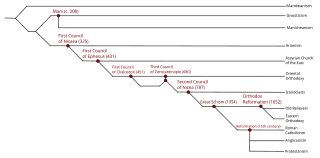
A Christian denomination is a distinct religious body within Christianity, identified by traits such as a name, organization, leadership and doctrine. Individual bodies, however, may use alternative terms to describe themselves, such as church or sometimes fellowship. Divisions between one group and another are defined by authority and doctrine; issues such as the nature of Jesus, the authority of apostolic succession, eschatology, and papal primacy may separate one denomination from another. Groups of denominations—often sharing broadly similar beliefs, practices, and historical ties—are sometimes known as "branches of Christianity". These branches differ in many ways, especially through differences in practices and belief.

The Catholic Church in the United States is part of the worldwide Catholic Church in communion with the Pope in Rome. With 20.8% of the United States population as of 2018, the Catholic Church is the country's second largest single religious group after Protestantism, and the country's largest religious denomination. The United States has the fourth largest Catholic population in the world after Brazil, Mexico and the Philippines, the largest Catholic minority population, and the largest English-speaking Catholic population. The central leadership body of the Catholic Church in the United States is the U.S. Conference of Catholic Bishops.

The Romanian Greek Catholic Church or Romanian Church United with Rome, Greek-Catholic is a sui iuris Eastern Catholic Church, in full union with the Roman Catholic Church. It has the rank of a Major Archiepiscopal Church and it uses the Byzantine liturgical rite in the Romanian language.
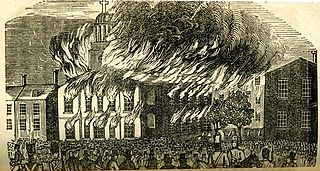
Anti-Catholicism is hostility towards Catholics or opposition to the Catholic Church, its clergy and its adherents. At various points after the Reformation, some majority Protestant states, including England, Prussia, and also Scotland made anti-Catholicism and opposition to the Pope and Catholic rituals major political themes, with anti-Catholic sentiment at times leading to religious discrimination against Catholic individuals. Historian John Wolffe identifies four types of anti-Catholicism: constitutional-national, theological, popular and socio-cultural.

Anti-Protestantism is bias, hatred or distrust against some or all branches of Protestantism and its followers.
The term Evangelical Catholic is used by Christians who consider themselves both "catholic" and "evangelical".

The Catholic Church in Germany or Roman-Catholic Church in Germany is part of the worldwide Catholic Church in communion with the Pope, assisted by the Roman Curia, and with the German bishops. The current "speaker" of the episcopal conference is Cardinal Reinhard Marx, metropolitan Archbishop of Archdiocese of Munich and Freising. It is divided into 27 dioceses, 7 of them with the rank of metropolitan sees. All the archbishops and bishops are members of the Conference of German Bishops. Due to a church tax compulsory for those who register civilly as Catholics, it is the wealthiest part of the Catholic Church in Europe.
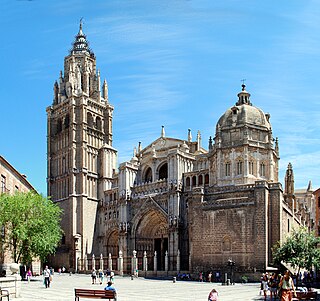
The Catholic Church in Spain is part of the Catholic Church under the spiritual leadership of the Pope in Rome, and the Spanish Episcopal Conference.
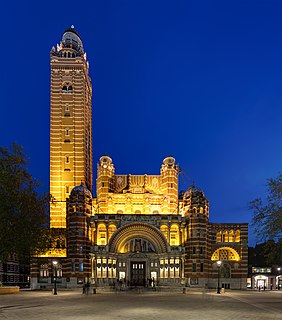
The Catholic Church in the United Kingdom is part of the worldwide Catholic Church in communion with the Pope. While there is no ecclesiastical jurisdiction corresponding to the political union, this article refers to the Catholic Church's geographical representation in mainland Britain as well as Northern Ireland, ever since the establishment of the U.K.'s predecessor Kingdom of Great Britain by the Union of the Crowns in 1707.
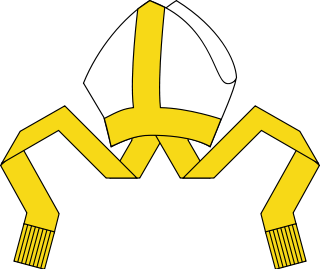
Joseph Lawson E. Howze was an African-American prelate of the Roman Catholic Church. He served as the first Bishop of Biloxi from 1977 to 2001.

The Catholic Church in Africa refers to parts of the Catholic Church in the various countries in the continent of Africa.
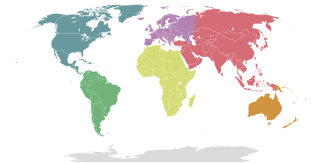
Christianity is the most adhered to religion in the United States, with 75% of polled American adults identifying themselves as Christian in 2015. This is down from 85% in 1990, lower than 81.6% in 2001, and slightly lower than 78% in 2012. About 62% of those polled claim to be members of a church congregation. The United States has the largest Christian population in the world, with nearly 240 million Christians, although other countries have higher percentages of Christians among their populations.
The Catholic Church in French Louisiana was ushered in with the establishment of colonies and forts in Detroit (1701), St. Louis, Mobile (1702), Biloxi, Baton Rouge, and New Orleans(1718).














